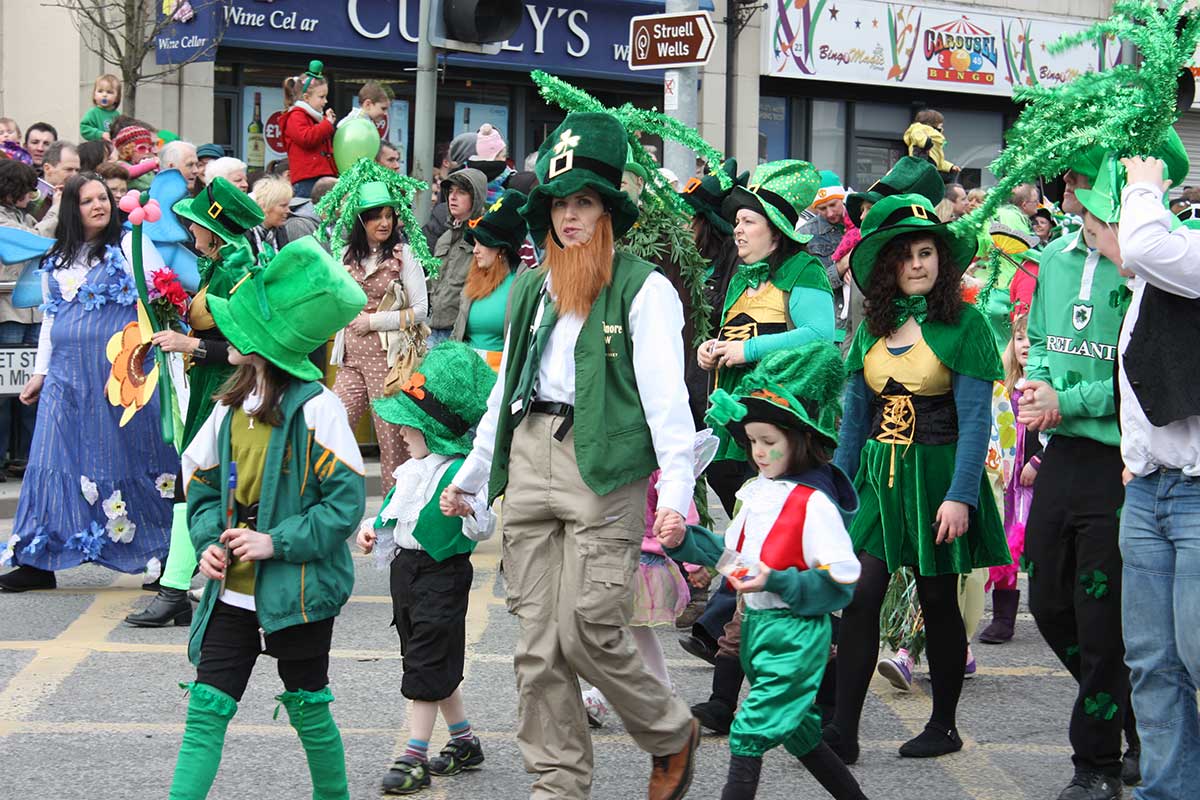
Photo credit: Wikimedia Commons
Celebrated annually on March 17, St. Patrick’s Day today has become synonymous with green beer, corned beef, and leprechauns—and is perhaps the most popular “drinking holiday” in America.
Most people know that St. Patrick’s Day was originally a religious holiday, and have a vague notion that St. Patrick had something to do with snakes and shamrocks. But who was St. Patrick really, and what has he got to do with green beer?
St. Patrick, the patron saint of Ireland, was actually born in Roman Britain in the 4th century. He was kidnapped by Irish pirates at age 16, and taken to Ireland as a slave. For approximately six years he tended to animals for his captors, before escaping and returning home.
Back home, Patrick studied to become a priest. Around 432 AD, he returned to Ireland to convert the Irish people to Christianity, and established monasteries, schools and churches to share his faith with the people of Ireland.
Various legends have been attributed to St. Patrick, though historians debate their validity. One claim is that Patrick used the shamrock to teach the Irish the doctrine of the Holy Trinity. For this reason, St. Patrick is often portrayed holding a bouquet of shamrocks in one hand—cementing its place as a symbol of St. Patrick’s Day. Another story claims that St. Patrick drove all the snakes from Ireland, though there is little evidence to suggest that snakes were ever present in the country.
St. Patrick died on March 17, 461, and the day was declared a religious feast day in his honor. By the 7th Century, St. Patrick’s Day was being celebrated across Ireland as a religious and cultural festival. And where there’s feasting… there’s bound to be drinking. Although the Irish government actually passed a law to mandate that all pubs be closed on March 17, the rule didn’t stick. The law was eventually repealed, and St. Patrick’s Day’s reputation as a drinking holiday… stuck.
In the 1700s, Irish immigrants came to America, and transformed St. Patrick’s Day into a day of revelry and remembrance for their Irish homeland. Cities with large Irish populations hosted parades, beginning with Boston in 1737 and followed by New York in 1762. One popular way to celebrate was to participate in the “wearing of the green,” which involved wearing a shamrock in your lapel (Ireland’s national plant) or donning a piece of green clothing.
Today’s St. Patrick’s Day celebrations are predominantly secular, and many of the things we associate with St. Patrick’s Day are less about Irish culture, and more for the benefit of tourists and secular partiers (green beer, anyone?).
But as the saying goes, “Everyone’s Irish on St. Patrick’s Day,” and the holiday is celebrated today in more countries than any other national festival.
If you’re feeling the luck of the Irish this St. Patrick’s Day, here’s a list of drinks bound to liven up your party and have you speaking blarney in to time:
…and of course, there’s always Guinness or your favorite Irish whiskey!
St. Patrick's Day is typically celebrated worldwide.